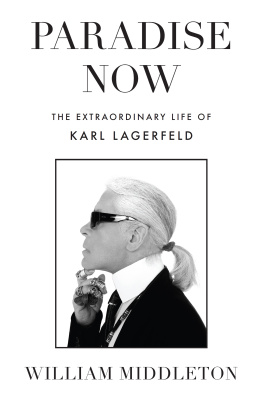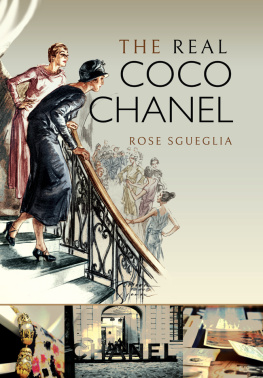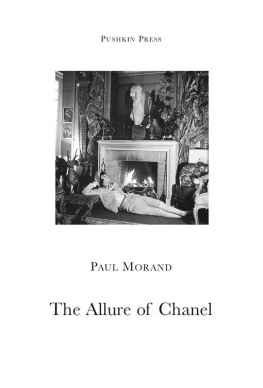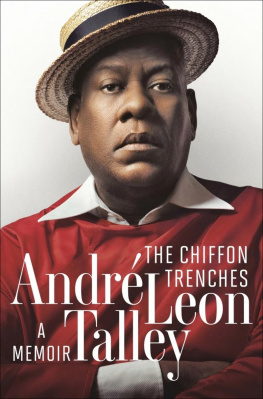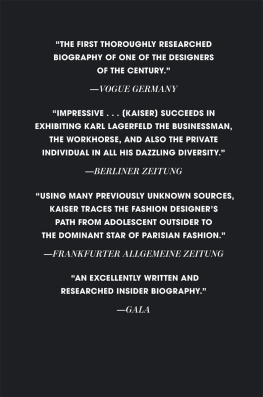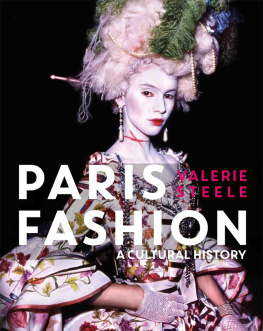I dont care about posterity. Just dont care! It wont do anything for me. Its today that counts: paradise now!
Its Never Too Late for a New Life.
IT WAS THE FALL of 2004 and Karl Lagerfeld was throwing everything into high gear. Karl, as most everyone called him, was just turning seventy-one, an age when his many fellow fashion designers were looking for an exit. Yves Saint Laurent, long perceived as his great rival, had retired two years before (and would die in 2008, when he, in turn, was seventy-one). Karl, however, was engineering a series of significant events, the first indication that he would be turbocharging the last fifteen years of his life.
By that time, he had already been in the public eye for fifty years. Karl was born and raised in and around Hamburg, the second-largest city in Germany, on the Elbe River just off the North Sea, an atmospheric port that was turned to face the world. As a teenager, he was given his parents blessing to move to Paris, his emotional, intellectual, and spiritual home. Karls slice of the French capital was quite concentrated, no more than a couple of square miles, on both sides of the Seine. His Paris extended from the Luxembourg Gardens and the Place Saint-Sulpice, where he had his first apartments, to the Faubourg Saint-Germain, the aristocratic neighborhood where he lived for decades in a sequence of increasingly dramatic apartments, to the gilded streets around the Avenue Montaigne, where he began his career, to the top of the Champs-lyses, where, with a view out onto the Arc de Triomphe, he launched his own fashion house, to the rue Cambon, the narrow street just behind the Htel Ritz, the headquarters of Chanel, the historic house that he revolutionized, beginning in 1983, turning it into an international colossus that produced over $11 billion in annual sales. Within that enchanted slice of Paris, Karl ascended to the very top of the citys social, financial, and intellectual worlds, managing to make himself into one of the most remarkable cultural figures of recent decades.
The designer had first started revving up around the new millennium. He had settled a thorny case with the French tax authorities establishing that he had, in fact, been an official resident of Monaco but agreeing to pay taxes on his French income.
In those years, Karl would begin every day at 5:00 or 6:00 a.m., waking up in his eighteenth-century apartment and putting on a robe in white, starched cotton piqu. As rigorous as he was about his work, he could be equally exacting about his appearance, often spending two hours every morning getting ready.
K arls birthday, September 10, happened to fall on a Friday. He rarely wanted to celebrate his own birthday, bristling at anything that focused too much on his past. Still, two of his close friends, Franoise Dumas, a beautifully connected publicist and event planner, and Bethy Lagardre, a former model from Brazil and the widow of French industrialist Jean-Luc Lagardre, asked if he would let them organize a birthday dinner. Karl agreed. It would be one of the first times he had done such a thing, and they had twenty-four hours to make it happen.
The evening, though hastily organized, had no problem attracting guests. More than a dozen dropped what they were doing to attend: Princess Caroline of Monaco and Ernst of Hanover, actresses Jeanne Moreau and Isabelle Huppert, designer Hedi Slimane, politician Roselyne Bachelot, and decorator Jacques Grange and his partner, gallerist Pierre Passebon. It was a dner plac, so Dumas and Lagardre had the seating impeccably organized. When Karl arrived, though, he had a surprise guest. He hadnt told us that he was bringing someone like Amanda Harlech or another good friend, and then he suddenly appeared with Yoko Ono, Lagardre remembered with a laugh. Karl seemed to be quite pleased with himself.
The room had dark wood paneling and doors, eighteenth-century drawings in gold frames, and French windows looking out onto the garden. The long table was lit with massive, gilded candlesticks and covered with white orchids in oversized crystal bowls filled with fresh green grapes, by Karls favorite Paris florist, Lachaume. Guests were served by a half dozen waiters, wearing their white double-breasted jackets with white shirts and black ties. After his extreme loss of weight, Karl was quite particular about what he ate. To prepare the birthday dinner, Dumas and Lagardre went straight to the top, turning to Guy Savoy, widely recognized as one of the best chefs in the world. Savoy came up with an exquisite menu for Karl and his friends: lobster from Brittany with an eggplant and sea crab salad, artichoke soup with black truffles, candied lamb shank with truffled potatoes, and a warm chocolate cake, layered with praline and chicory crme. Although Karl rarely drank, France will always be France, so Savoy paired the meal with well-chosen wines: a white Burgundy, Meursault, 2001, and a red Bordeaux, Chteau La Lagune, 1995.
That night, Karl wore a dark suit, a white dress shirt with a vertiginous officers collar, a narrow black tie, and a pair of jet-black sunglasses. As usual, his hair was pulled into a ponytail and powdered white. He was, as he tended to be in private, warm, engaging, interested in others. Around the table, it was obvious to all that he was in great spirits and the evening became particularly festive. The dinner went on and on, said Lagardre. Everyone was in such a great mood. The light was exceptional, the meal was perfect, there was a real sense of harmony. We could have planned it out for a month, and it would not have been as much of a success.
As the party eventually wound down and guests made their way back to the entrance of the house, they found one final treat. In the center of the courtyard, the cour dhonneur, Dumas and Lagardre had arranged to have dozens of votive candles positioned on the old cobblestones, lighting up the Paris night, forming a giant K.
T he following Friday, at a much more public event on the top floor of the Pompidou Center, was the moment that Karl turned from being an important designer into an international superstar. Fashion designers think they are famous, Dior Homme designer Hedi Slimane said at the time. In fact, they are not, not even Calvin Klein. Theres only one famous fashion designer, and thats Karl.
The catalyst for his new level of renown: a capsule collection Karl had designed for H&M, the Swedish colossus, with $6.2 billion in annual sales, and one thousand stores in nineteen countries (now over $25 billion in sales every year). The man responsible for turning Chanel into one of the most exclusive fashion brands in the world was going mainstream. He intended to do what no one else had ever successfully achieved: fuse the elegance of high fashion with the power of the mass market (two decades before, in 1983, when Halston attempted it with JCPenney, it ruined his career, with Bergdorf Goodman dropping him overnight).
Karls collaboration with H&M illustrated a host of qualities that set him apart from other designers. He was always completely focused on the moment. Although he had a great grasp on history, he found nostalgia horrifying. He also had a fascination about, and knowledge of, everything that was happening in the world of style. It was rare that any fashion trend, a new piece of music, or any artistic movement escaped his attention. And, unlike many designers, certainly those who were septuagenarians, Karl was always eager to take risks.
He was first approached about the H&M project by Donald Schneider, the former art director of French

